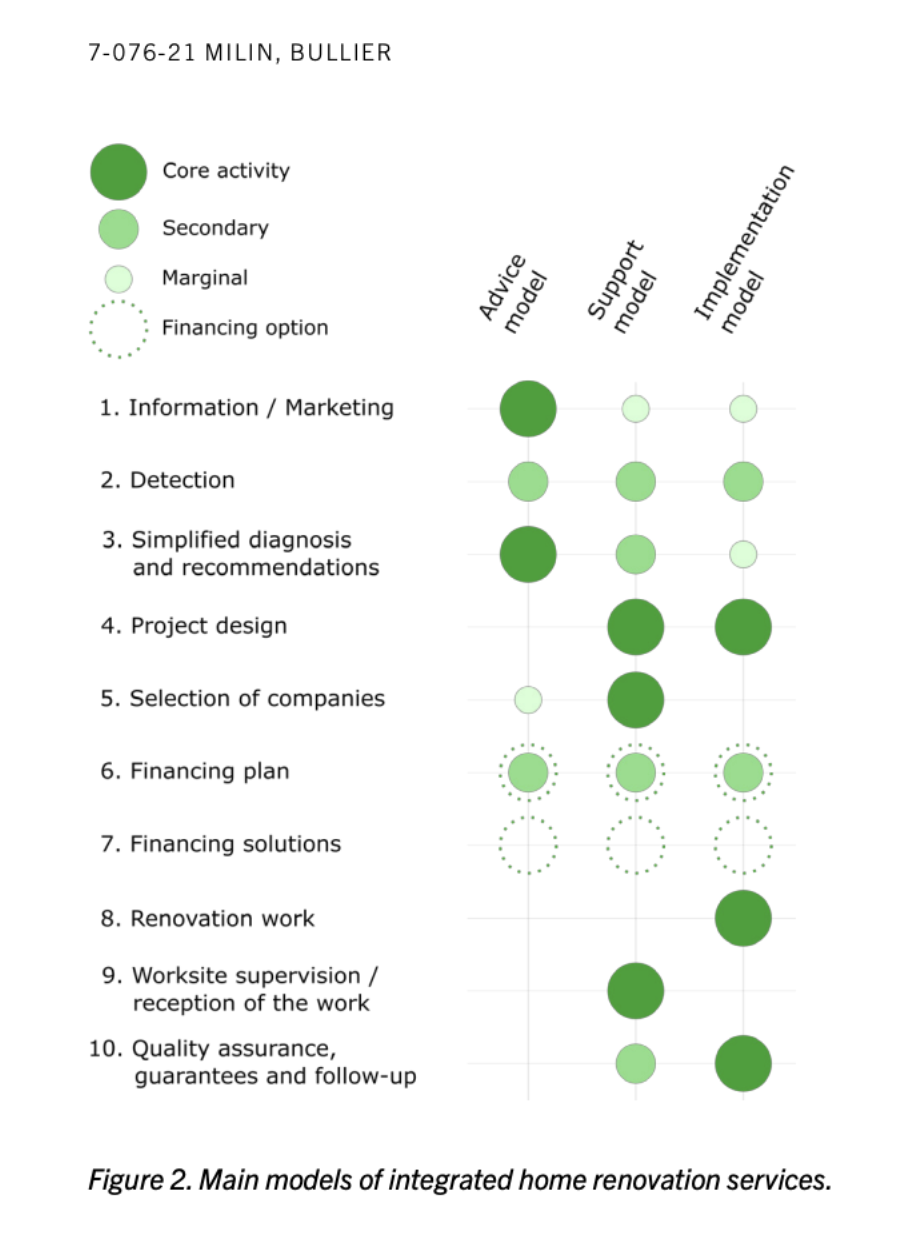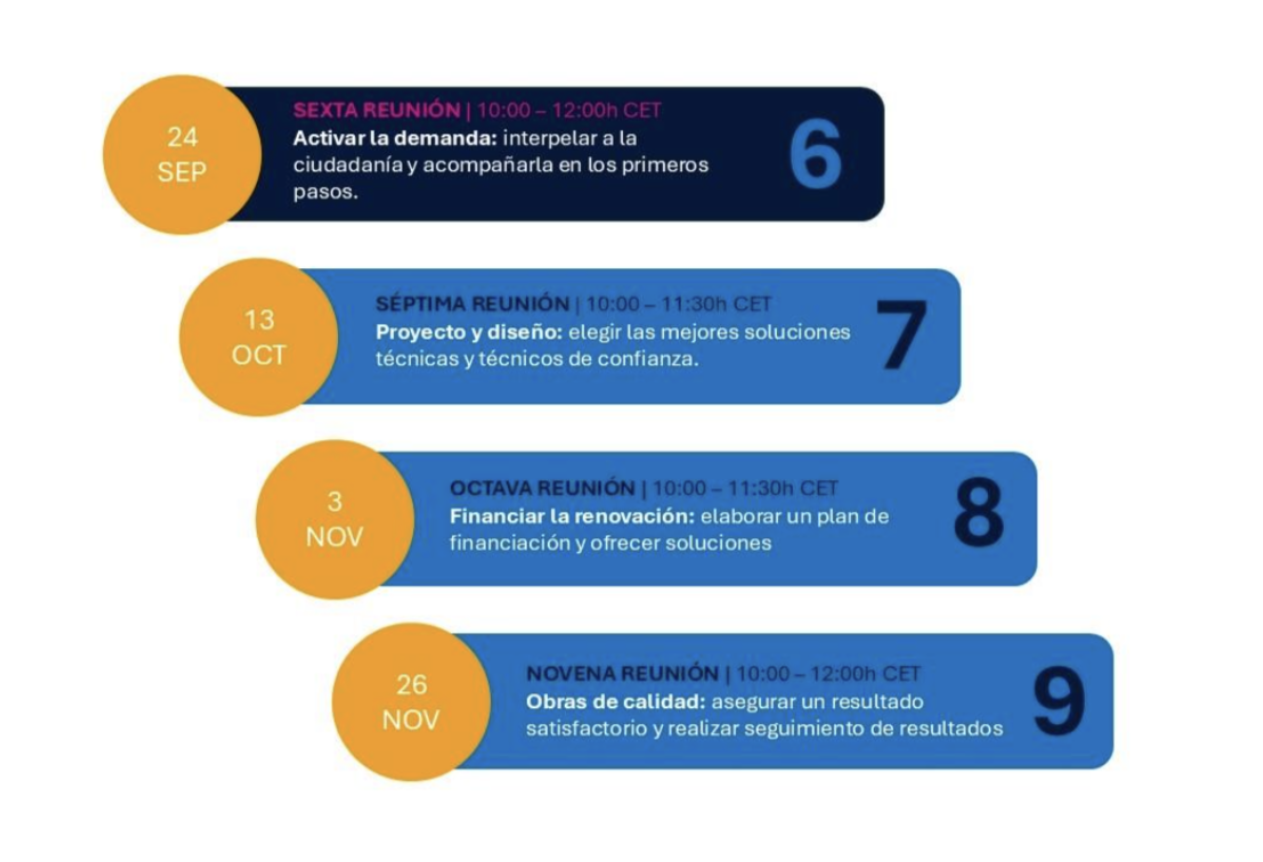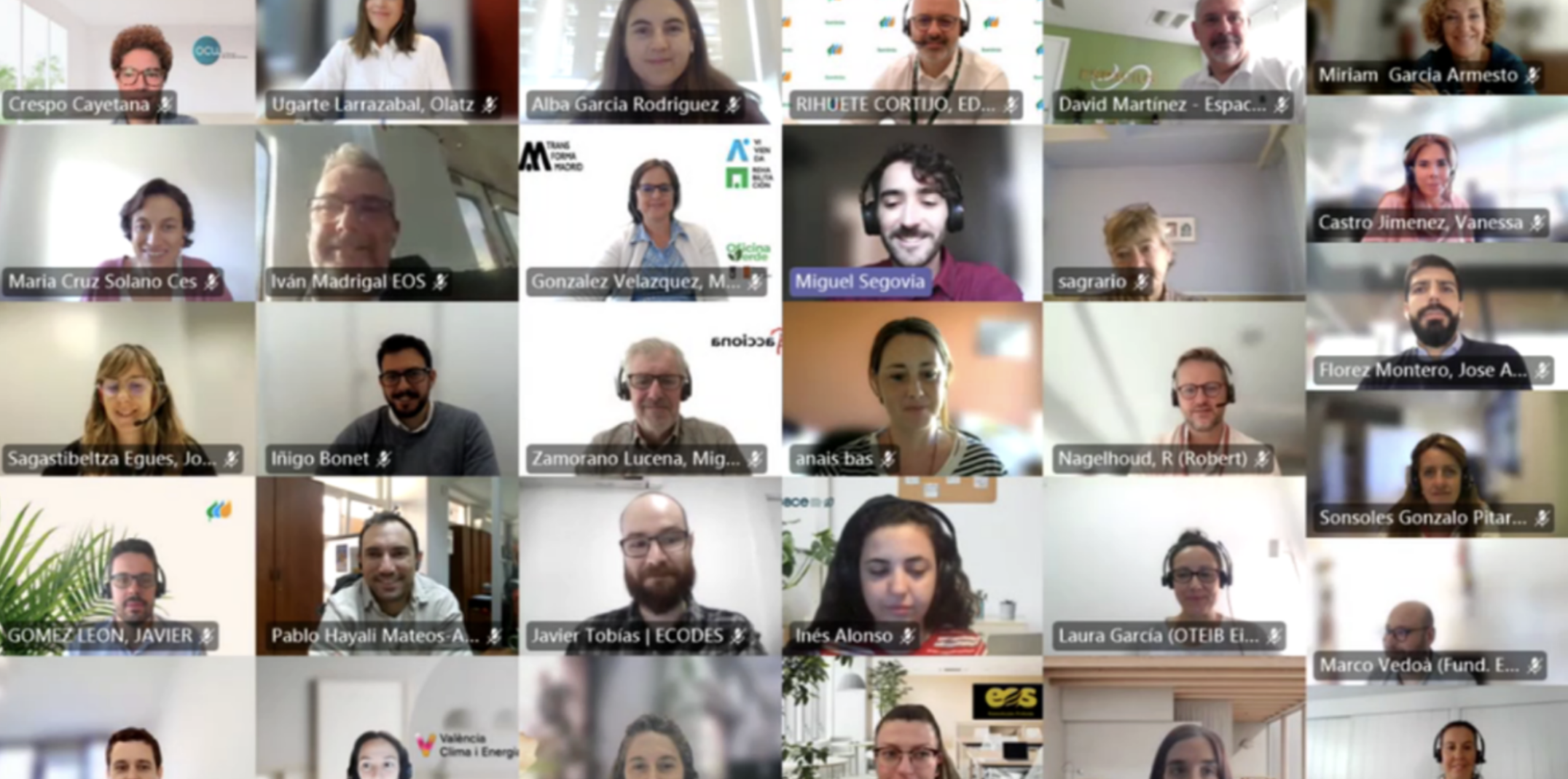On 24 September , 2025, the Spanish EU Peers Community held its 6th meeting, which was attended by 30 different organizations. This was the first of a cycle of four meetings dedicated to analyzing the ten steps of the renovation process, according to the article Towards large-scale roll out of "integrated home renovation services" in Europe by Millin and Bullier. This session addressed the first three steps, focusing on how to activate the demand: information and marketing, detection and diagnosis, as well as the formulation of recommendations.

Before addressing the central topic of the meeting, and in continuity with the work developed by the community in previous meetings, Miguel Segovia (GBCE) presented the main news regarding the National Building Renovation Plan (NBRP), highlighting the impact of EU Peers on this plan. Then, three members of the community shared their experiences and projects regarding raising demand.
- HORIS Project, an online one-stop shop for integrated home renovation services with the aim of helping and accompanying users in the process. Presented by Cayetana Crespo from OCU.
- Oficina Verde de Madrid, a pioneering centre to raise awareness among its citizens of the importance of energy efficiency and sustainability in their homes. Presented by María González from the Madrid City Council.
- The OSS Network in Navarre Region, four keys to its success: close and comprehensive accompaniment, proactivity of the administration, an affordable framework and the "leading neighbors". Presented by Joana Sagastibeltza from Nasuvinsa.
After the presentations, a Q&A session was opened in which members of the community were able to have a dialogue with the speakers. One of the relevant issues to all OSS was the discussion on the viability of the NASUVINSA model once the European funds end. In this regard, Joana Sagastibeltza pointed out that, although a substantial part of the funding has come from European programs such as ELENA, agreements have also been launched with municipalities and regional contributions. This confirms that the model does not depend exclusively on European funds and that there are alternative ways of financial sustainability at local and regional level. Sagastibeltza also stressed that the Navarrese programs have specific regional subsidies for isolation and that the most appropriate population size per office is around 20,000 inhabitants.
Another of the topics addressed was redensification through the ‘Urban Regeneration Agent’ business model, which is proposed as one of the most solid alternatives to foster renovations without public aids. An attendee commented on this model, included in the Spanish Law for Renewal, Regeneration and Renovation (Law 3R), which allows the buildability of a district to be increased to finance the renovation of the district. Both the speakers and the invited experts agreed that this tool can be especially useful for communities without their own resources, although its application depends to a large extent on municipal urban planning regulations. As an example, the case of Vitoria was highlighted, whose Urban Planning has identified remnants of buildable land to promote these actions, in addition to regulating the conversion of commercial area into housing.
The renovation of the rental housing stock was another of the highlighted issues, arising from the intervention of an attendee who proposed the activation of demand in this situation. Sagastibeltza explained that in Navarre public funds have been allocated for local entities to renovate municipal buildings for this purpose. For her part, González detailed the experience of the Reviva program in Madrid: a scheme in which owners temporarily transfer the home to the Municipal Housing Agency, which is responsible for renovating and renting it.
Finally, the role of the HORIS platform promoted by the OCU was addressed. Cayetana Crespo responded about the quality control of their list of professionals: they are currently working with a responsible declaration, although it is planned to reinforce the system with audits and monitoring of the budgets presented. In addition, Crespo stressed that the platform offers private financing alternatives for cases in which it is not possible to access public aid, with the aim of not slowing down the demand for rehabilitation.
To conclude the session, participants were invited to take part in the public consultation of the National Housing Plan. It was highlighted that this Plan will be one of the central topics of the debate in the coming weeks and the invitation to attend the next meetings was reiterated.

Related Articles

Taking the Energy Efficiency Directive from Theory to Practice: EU Peers provides insights at the plenary meeting of the Concerted Action for the Energy Efficiency Directive

EU Peers at the Assises Européennes de la Transition Énergétique in Strasbourg
Empower yourself by becoming a member of EU Peers Community of Practice!
Empower yourself by becoming a member of EU Peers Community of Practice!
Expand your knowledge, connect with other organisations, and scale up the sector of IHRS by joining the vibrant and evergrowing Community of Practice




